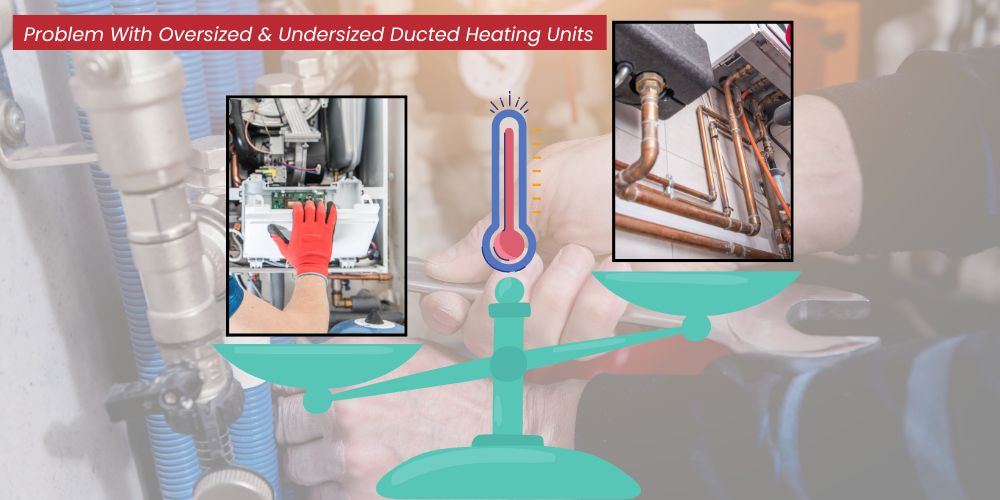As the chill of Melbourne’s winter sets in, ensuring your home is comfortably warm becomes a top priority. One of the most efficient ways to achieve this is by installing a gas-ducted heating system. However, selecting the right size unit for your home can be a daunting task. This blog will guide you through the key considerations to ensure you choose a unit that provides optimal warmth and efficiency for your Melbourne home.
Gas ducted heating systems work by drawing air from inside your home, heating it using a gas furnace, and then distributing the warm air through a series of ducts. The right size unit ensures your home is heated efficiently and economically. If the unit is too small, it will struggle to heat your home adequately. Conversely, if it’s too large, it will cycle on and off frequently, leading to unnecessary wear and tear and higher energy bills.
Read the Detailed Guide to Selecting the Right Gas-Ducted Heating Unit
The most critical factor in determining the right size gas ducted heating unit is the size and layout of your home. Measure the total square footage of your home and consider the number of rooms. Homes with open floor plans or high ceilings may require a larger unit in contrast to more compartmentalized layouts.
The level of insulation in your home’s walls, roof, and floors significantly affects heating efficiency. Better-insulated homes retain heat longer, potentially reducing the size of the heating unit needed. Additionally, the number and type of windows, as well as their orientation, can impact heat retention. Homes with large, north-facing windows, common in Melbourne, may gain more passive heat during the day but lose it quickly at night.
Melbourne’s climate is known for its variability, with cold winters requiring reliable heating solutions. Average winter temperatures and the frequency of cold snaps should inform your choice. A unit that performs well under the coldest expected conditions will ensure consistent comfort.
Opt for a gas-ducted heating unit with a high energy efficiency rating. While such units might have a higher upfront cost, they often result in lower running costs and better long-term savings. Look for units with high star ratings to ensure you’re making an environmentally friendly choice that reduces energy consumption.
To get a rough estimate of the heating capacity required, a common rule of thumb is to allow 0.15 kW per square meter of space. For instance, a 150-square-meter home would require a unit with a capacity of around 22.5 kW. However, this is a basic estimate, and factors like insulation, window types, and specific climate conditions should refine this calculation.

An oversized gas-ducted heating unit might seem like a good idea, assuming that bigger means better. However, this misconception can lead to several issues:
An oversized unit heats the space too quickly, causing it to cycle on and off frequently. This short cycling not only wastes energy but also puts unnecessary strain on the system, leading to increased wear and tear.
Frequent cycling reduces the efficiency of the heating unit. Each time the system starts up, it uses a surge of energy, which adds up to higher utility bills over time.
Oversized units are more expensive to purchase and install. Additionally, frequent cycling leads to more frequent maintenance and potentially costly repairs.
An oversized unit may quickly reach the set temperature, but it doesn’t run long enough to distribute the heat evenly throughout the home, resulting in hot and cold spots.
On the flip side, an undersized ducted heating unit poses its own set of challenges:
An undersized unit struggles to heat the entire home, often running continuously to reach the desired temperature. This constant operation leads to higher energy consumption and increased utility bills.
Despite running continuously, an undersized unit may fail to adequately heat your home, leaving you with a consistently uncomfortable indoor environment.
The constant strain of trying to heat a larger space than it’s designed for can lead to premature wear and tear. This can shorten the lifespan of the unit and lead to more frequent breakdowns and repairs.
An undersized unit may not circulate air effectively throughout your home, resulting in poor air quality as the system fails to filter and distribute air properly.
Selecting the right size gas ducted heating unit for your Melbourne home is crucial for achieving optimal comfort, efficiency, and cost savings. It ensures your system operates effectively, lasts longer, and provides a consistent and comfortable indoor climate. Both oversized and undersized units have significant drawbacks that can affect your comfort, energy bills, and the longevity of your heating system. By carefully assessing your home’s specific needs and consulting with heating professionals, you can make an informed decision that benefits your wallet and the environment. Choosing the appropriate unit will provide the perfect balance of warmth, efficiency, and reliability, ensuring your home remains a cozy refuge throughout Melbourne’s coldest months.
Reach out to Craig’s Gas & Plumbing to schedule a convenient time for our professionals to visit your property and provide precise measurements. We also specialize in ducted heating installation, servicing, gas ducted heating repairs, and replacements throughout Melbourne.